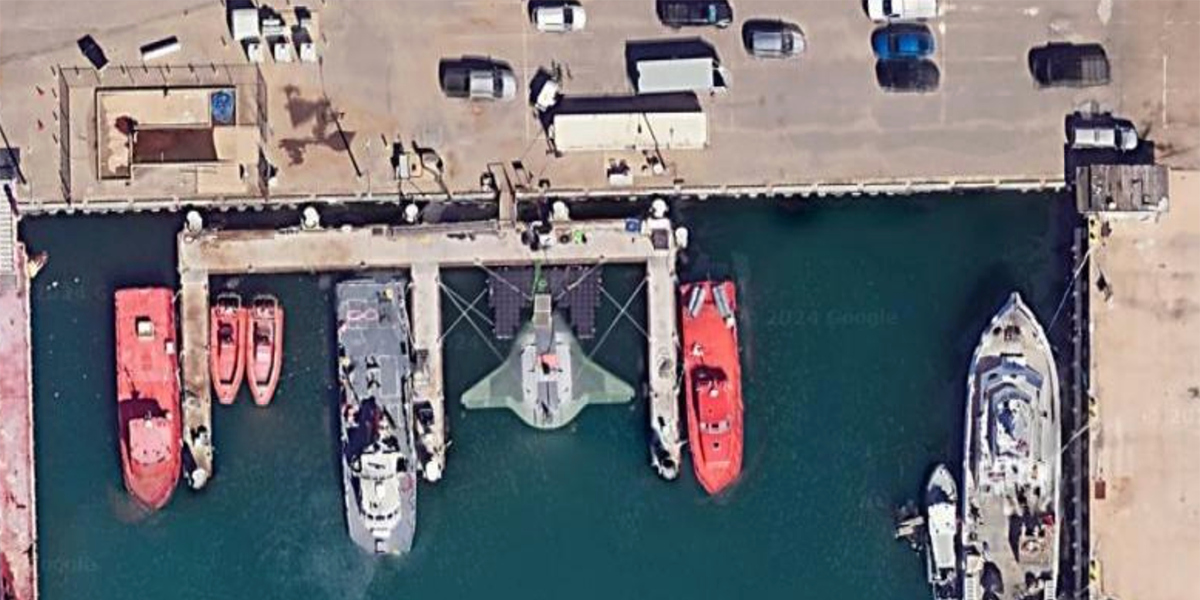
The US military’s experimental drone, called “Manta Ray”, is known (or not known) for its ability to carry out stealthy missions across the globe.
But it couldn’t hide from Google Maps.
So much for being top-secret.
Eagle-eyed Google users spotted the futuristic vessel docked at at Port Hueneme naval base in California, making the formerly hard to find ship go viral.
Satellite photos revealed the autonomous vessel, named after manta rays for its resemblance to the sea creatures. The slick design had it standing out amongst the other military vessels it was sharing a port with.
Known for it ability to anchor itself deep underwater while operating in low-power mode, Manta Ray was produced by Northrop Grumman as part of a US Navy project to develop long-range underwater weapons.
It’s a sophisticated underwater drone capable of hibernating on the sea floor for “very long periods” without refueling.
It uses “efficient, buoyancy-driven gliding to move through the water,” Dr. Kyle Woerner, Manta Ray program manager at the Defense Advanced Research Projects Agency, said in an agency news release.
“Our successful, full-scale Manta Ray testing validates the vehicle’s readiness to advance toward real-world operations,” Woerner added.
“The craft is designed with several payload bays of multiple sizes and types to enable a wide variety of naval mission sets.”
Exactly how under wraps the vessel is expected to remain is a bit of an unknown, as Northrop Grumman officially showed it off in on-board footage of the UUV sedately lurking in the waters off the Californian coast during its first full-scale test.
But the military has remained tight-lipped when it comes to the specifics of the craft, including its actual dimensions – something that Google Maps might have made easy to figure out.
The development of Manta Ray was launched by the Defense Advanced Research Projects Agency in 2020 to give the US a leg-up in long-range and long-term underwater operations.
It’s designed to be able to remain on the seafloor for extended periods of time, operating at a low power mode that makes refueling often unnecessary.
It’s also completely uncrewed and designed to be modular, allowing it to be easily disassembled and repaired — and perhaps reconfigured according to mission needs.
We don’t know much about this futuristic watercraft, except where the military has it docked.
If you thought that was interesting, you might like to read about 50 amazing finds on Google Earth.